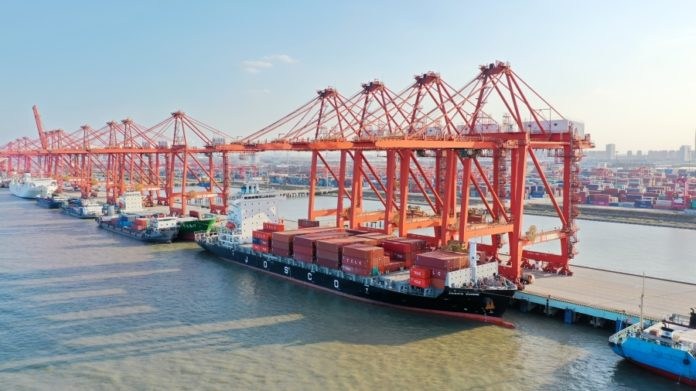The China Container Industry Association (CCIA) has said that the recovery of container movements in China is progressing rapidly.
In a survey report released on 18 March 2020, CCIA said that as of 10 March 2020, China’s container ports, barges, railways and multi-modal transport have resumed work, while the operating capacity of trucks and storage facilities is around 90% of pre-Covid-19 levels.
The Lunar New Year holidays were extended by one to two weeks from the end of January 2020, as China sought to contain the viral outbreak.
CCIA’s surveys showed that even when Covid-19 cases were rising in China, ports and railways, especially those catering to China-Europe container shipments, continued to operate, in order to facilitate the movement of protective gear and medical supplies. However, facilities in Hubei province, the original epicentre of the pandemic, took a longer time to resume work.
Other consultancies have estimated that the outbreak wiped off shipments of 17 million TEU and US$6 billion of revenue from liner operators as the global economy took a hit.
Freight trains from China to Europe are now operating at 90% of pre-Covid-19 levels, while at least 85% of such trains have restarted services.
CCIA’s executive vice-chairman Li Muyuan said that since early February, the association has been tracking the impact of the virus on the industry and the progress of manufacturers’ work resumption.
Li said, “In the past three weeks, except for Hubei, work resumption has been rapidly gaining momentum across the country. Many restrictions on work resumption are gradually being lifted.”
However, with the Covid-19 epicentre shifting to Europe and the subsequent lockdown of the continent and other countries, another supply chain disruption is looming. China is imposing quarantine obligations on ships arriving from, South Korea, Iran the UK and most of the European Union. These measures apply to ships calling at China’s two busiest container ports, Shanghai and Ningbo-Zhoushan.
Martina Li
Asia Correspondent







